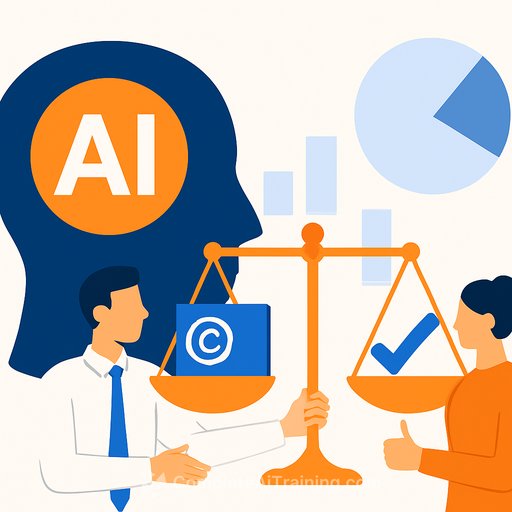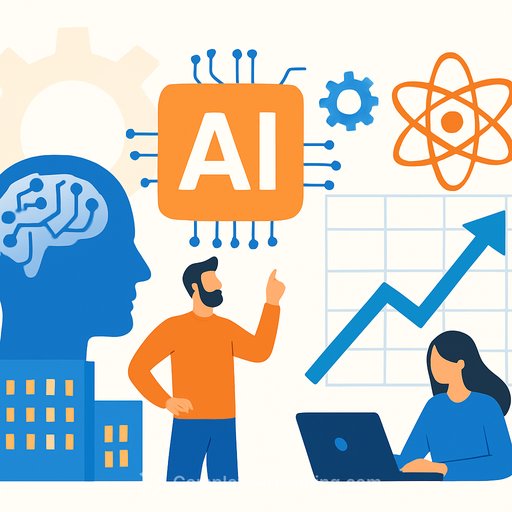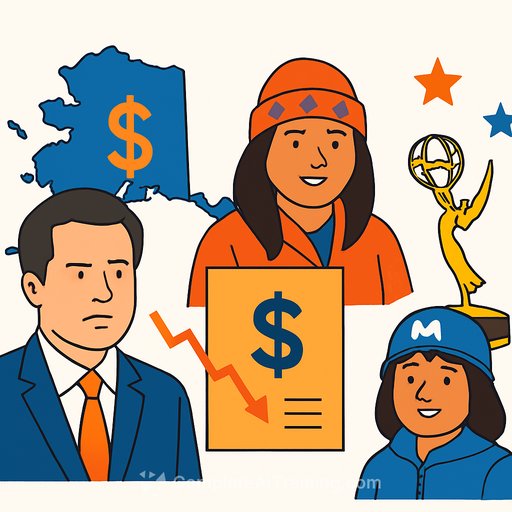Creative industries want fair rules for AI. Here's how writers and artists can protect their work now
AI models are learning from huge datasets that often include our books, songs, scripts, and images. Most of that material was scraped without clear permission, credit, or payment.
Industry groups are pushing for stronger rights, transparency, and proper licensing. While policy catches up, you can take practical steps today to protect your catalog, set clean boundaries with clients, and still use AI to ship better work.
What's actually being proposed
- Licensing for training data: If your work trains a model, you get to say yes, no, or set terms.
- Transparency: Clear disclosure of what datasets were used and how.
- Opt-in/opt-out controls: Creators choose whether their work can be used for training.
- Fair remuneration: Payment frameworks when creative catalogs fuel commercial AI systems.
- Better tooling: Content identification, provenance, and standardized contracts to enforce rights.
What this means for you
Your catalog is valuable training data. That value compounds when your voice or style becomes a feature that anyone can imitate.
The goal isn't to avoid AI-it's to set rules that keep your work respected and paid. You want control, credit, and a clean record of how your content is used.
Protect your catalog this week
- Register key works: If you're in the U.S., register high-value pieces with the Copyright Office. It strengthens your position in disputes. U.S. Copyright Office: AI resources
- Add provenance: Use Content Credentials (C2PA) to attach verifiable metadata to files. It won't stop scraping, but it helps prove origin and detect edits. Content Credentials
- Set crawler rules: Update robots.txt and headers to block common AI scrapers (e.g., GPTBot, Google-Extended). Many models respect these signals.
- Keep clean masters: Store timestamps, drafts, RAW files, and working notes. This evidence matters if your work is copied or your style is cloned.
- Watermark and fingerprint: Quiet marks and unique phrasing patterns make attribution and detection easier.
Contracts that cover AI
Add clear clauses to your agreements. Keep them short and specific.
- Training prohibition: "Client will not use the Work, or allow third parties to use the Work, to train or fine-tune AI systems without my written permission."
- Attribution: "Public use requires credit and a link to my portfolio/site."
- Style imitation: "Client will not prompt AI to imitate my style for derivative works without a separate license and fee."
- Disclosure: "If AI tools are used, each AI-generated section will be flagged, reviewed, and approved by me for originality and rights clearance."
- Revenue share (optional): "If the Work is licensed for AI training, compensation will be [fee or % of model revenue/data deal]."
Licensing options for AI training
You might choose to license part of your catalog for AI training if the terms make sense. Separate this from your standard publishing or client licenses.
- Scope: Training only, no public redistribution.
- Attribution: Require dataset credit and provenance logs.
- Privacy: No retention of personal data or client-confidential text.
- Audit: Right to audit dataset inclusion and removal upon request.
- Compensation: Upfront fee plus usage-based royalties when feasible.
If you think your work was used without permission
- Ask for disclosure: Check model documentation, model cards, and public dataset indexes for references to your work or the platforms you publish on.
- Request removal: File removal or opt-out requests where available. Document every step.
- Use takedown processes: If copies of your work are posted on data mirrors or prompt marketplaces, file a DMCA or platform-specific complaint.
- Collect evidence: Screenshots, timestamps, and prompts that reproduce your phrases, structure, or images help establish a pattern.
Use AI without undermining your rights
AI can accelerate drafts, reference checks, and variations. Use it with a paper trail.
- Annotate AI assist: Keep a simple log: tool, date, prompt summary, and what you kept.
- Originality pass: Rewrite outputs in your voice and run a plagiarism check on final deliverables.
- Protect client data: Don't paste private materials into tools that train on user input.
- Keep your edge: Build a signature style guide. AI can riff, but clients hire you for judgment and taste.
What to watch on policy
Expect more clarity on training-data licensing, dataset transparency, and model disclosures. Industry bodies and regulators are actively reviewing how to balance innovation with creator rights.
- Copyright offices and standards groups: Follow updates and guidance. They influence how platforms implement controls and disclosures.
- Platform policies: Some tools offer opt-outs or "no-train" settings. Turn them on by default.
Simple checklist to keep your house in order
- Register high-value works; maintain dated originals.
- Block AI scrapers; add provenance metadata.
- Use contracts with AI clauses; separate AI-training licenses.
- Log AI-assisted steps; review for originality and client safety.
- Document and act quickly if your work appears in datasets or outputs.
Level up your skills (so clients keep coming back)
Writers and creatives who pair strong taste with smart AI workflows win more briefs and keep better margins. If you want structured training and tools to get there, start here:
Bottom line
Your work has value-training data doesn't erase that. Set your rules, document your process, and use AI on your terms.
Policy is moving, but your contracts, metadata, and habits will do most of the work right now. Build a setup that protects your catalog and keeps the demand for your voice high.
Your membership also unlocks:










